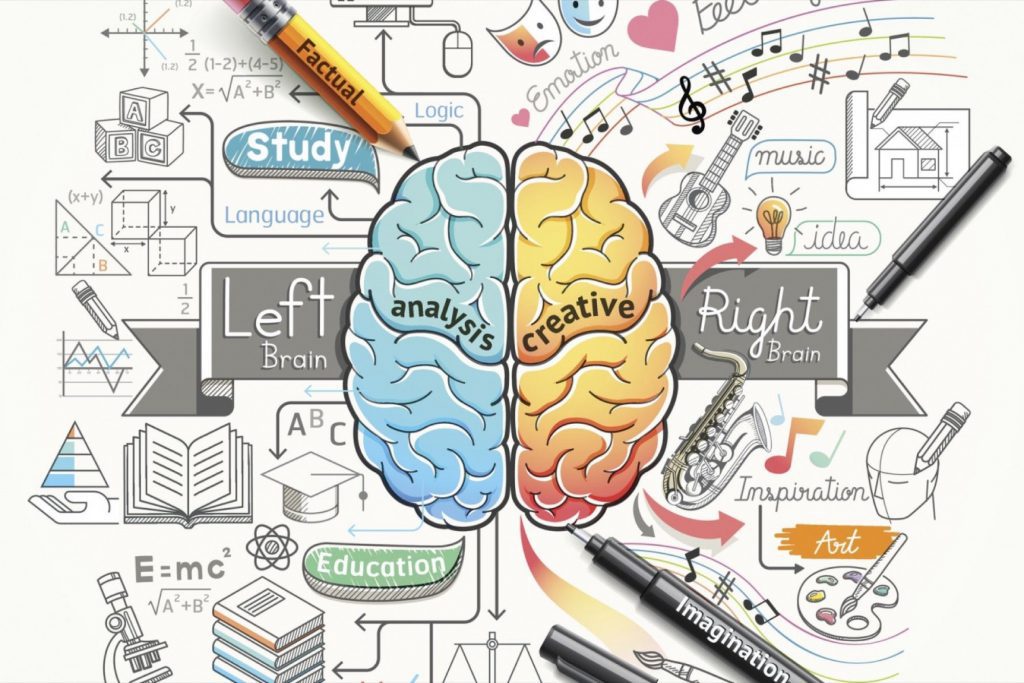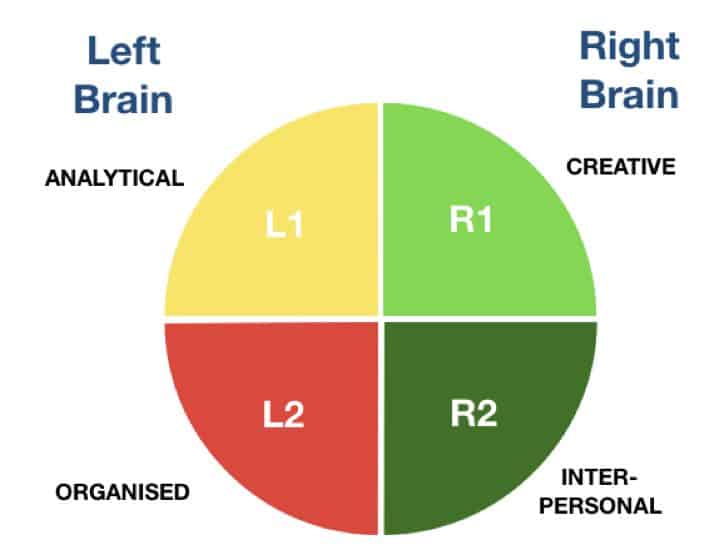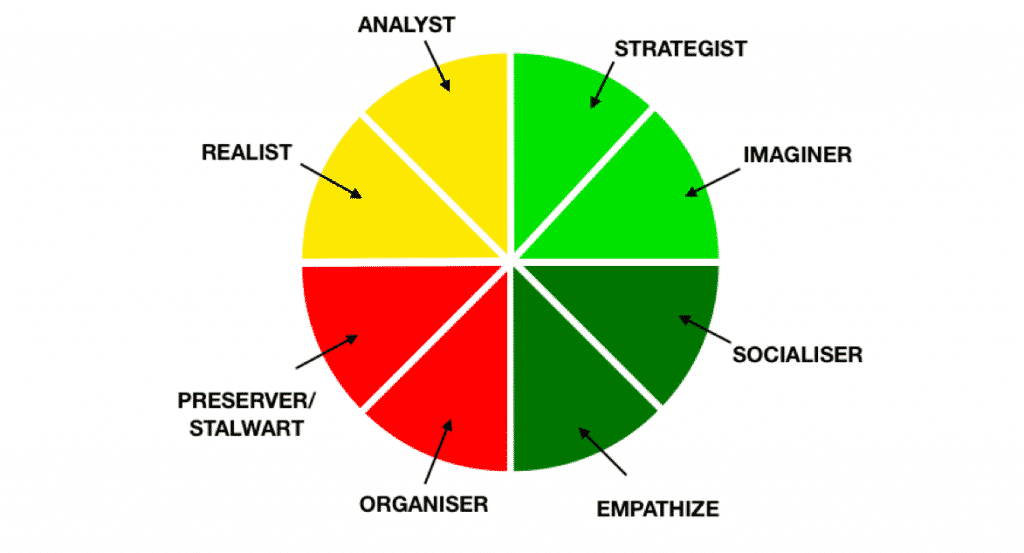As we are different from the outside we are different from the inside also. Inside means our thinking preferences, behavior, and our habits. Our Brain looks the same physically but its programming is different. Memory and programmed are saved in it differently in different people. As you seen in the pictures, our brain divided into two hemispheres: The Left Brain and the Right Brain.
The two different sides of the brain control two different “modes” of thinking. It also suggests that each of us prefers one mode over the other. Experimentation has shown that the two different sides, or hemispheres, of the brain are responsible for different manners of thinking. The split-brain theory is based on the left brain and the right brain.
Two Different Sides of Brain

Left Brain
The left brain is more verbal, analytical, and orderly than the right brain. It’s sometimes called the digital brain. It’s better at things like reading, writing, and computations.
According to Sperry’s dated research, the left brain is also connected to:
- logic
- sequencing
- linear thinking
- mathematics
- facts
- thinking in words
Right Brain
The right brain is more visual and intuitive. It’s sometimes referred to as the analog brain. It has a more creative and less organized way of thinking.
Sperry’s dated research suggests the right brain is also connected to:
- imagination
- holistic thinking
- intuition
- arts
- rhythm
- nonverbal cues
- feelings visualization
- daydreaming
Four Quadrant of Brain
left brain and right brain further divided into four quadrants. The left brain is in the upper left(L1) and lower left(L2). The right brain is in the upper right(R1) and lower right (R2) as shown in the picture.

| Left Brain | Right Brain |
|---|---|
| L1 Analytical Facts Digging Deeper Technical Not Emotional Formal | R1 Creative Big Picture Risks Innovative Future-Oriented Unstructured |
| L2 Organised Practical Discipline Fault Finding Time conscious Timetable | R2 Inter-Personal Emotional Playful Sharing Ideas Kind and caring Social |
Eight Quadrant of Brain

| Left Brain | Right Brain |
|---|---|
| Realist: Focus, alone, Sits at a desk, clear guidelines, no disturbances | Strategist: Bored with repetition, questioning, new/experimental work |
| Analyst: Likes Research, Figures, Intolerant mistakes, Questioning info | Imagineer: Diagrams/pictures, new methods Innovator |
| Stalwart/Preserver: Disciplined, Detailed Summaries, Repetition | Socializer: Likes People, Emotional, Group Projects, music |
| Organizer: Timetable, makes lists, step by step | Empathiser Connects with life experiences, Self-development |
What is Whole Brain Approach?
As we saw 4 quadrants and 8 quadrants of the brain. We have preferences in different quadrants. Some are left-brain people and some are right-brain people. Some have a combination of different quadrants, like L1 + R1 or L2 + R2 or L1 + L2 + R1, etc. There are rare chances of having preferences in each quadrant. So having preferences in each quadrant is the Whole Brain Approach. This is also called using the whole brain.
Why Whole Brain Approach is Important?
Every quadrant has its own importance. Some have some weaknesses and some have strengths. if we understand the strength of each quadrant and start working on that it will help us in the whole-brain approach. if we apply the whole-brain approach it can make our life more pleasant and successful.
How to Know Your Brain Preferences?
Now questions come here how do know what is brain preferences? In which quadrant you dominant more? Your left brain vs right brain or can say you have left-brain dominance or right-brain dominance. For that, we made our instrument. That is BSY Instrument. It is base on 2 questionnaires. One questionnaire gives 4 quadrants score and another gives 8 quadrants score. After attempting that brain dominance test you know about your left brain dominance and right brain dominance.
Love,
Saurabh Goel
Read more blogs on NLP, Subconscious mind

